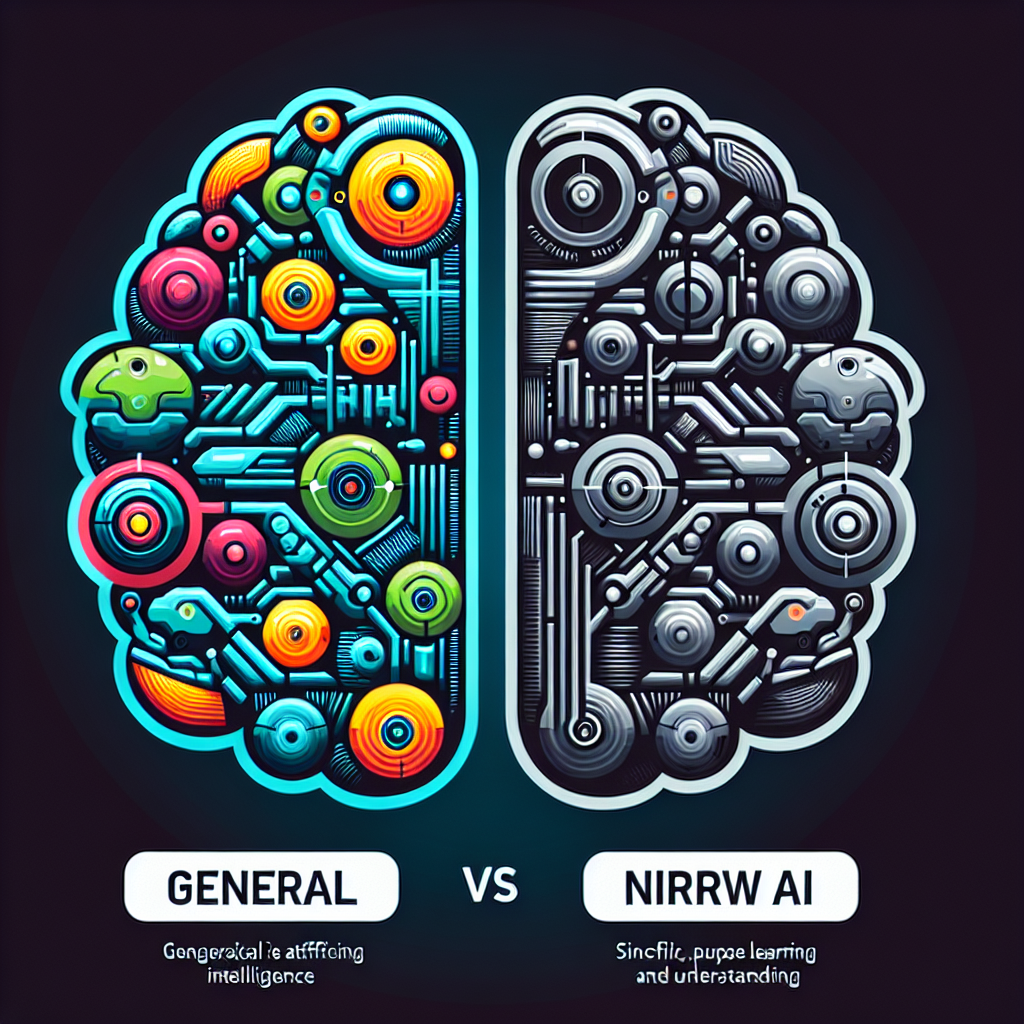Artificial Intelligence (AI) is one of the most talked-about technologies in recent years, with the potential to revolutionize industries and change the way we live and work. Within the field of AI, there are two main categories of intelligence: Artificial General Intelligence (AGI) and Narrow AI. Understanding the key differences between these two categories is crucial for grasping the full potential and limitations of AI technology.
AGI vs. Narrow AI: What’s the Difference?
AGI, also known as strong AI, refers to a form of artificial intelligence that is capable of performing any intellectual task that a human being can. This includes tasks such as problem-solving, reasoning, learning, and understanding natural language. In essence, AGI is the holy grail of AI research – a machine that can think and reason like a human, and potentially surpass human intelligence.
Narrow AI, on the other hand, refers to artificial intelligence that is designed to perform specific tasks or functions. This type of AI is limited in scope and can only perform the tasks it has been programmed to do. Examples of narrow AI include virtual assistants like Siri and Alexa, recommendation algorithms used by online retailers, and self-driving cars.
The key difference between AGI and Narrow AI lies in their capabilities and scope. AGI has the potential to outperform humans in a wide range of intellectual tasks, while Narrow AI is limited to specific domains and tasks. AGI is often seen as the ultimate goal of AI research, while Narrow AI is already being used in a variety of applications and industries.
Understanding the Limitations of AGI and Narrow AI
While AGI holds the promise of superhuman intelligence and capabilities, it is also a concept that is still largely theoretical. The development of AGI is a complex and challenging task that has yet to be fully realized. Researchers are still working on developing the algorithms and technologies needed to create a truly intelligent machine.
Narrow AI, on the other hand, is already in use in a wide range of applications and industries. While Narrow AI is limited in scope, it is highly effective at performing specific tasks and functions. For example, recommendation algorithms used by online retailers can analyze customer data and preferences to provide personalized product recommendations, while self-driving cars use AI to navigate and make decisions on the road.
One of the key limitations of AGI is the challenge of creating a machine that can truly understand and reason like a human. Human intelligence is complex and multifaceted, and replicating it in a machine is a daunting task. Narrow AI, on the other hand, is limited by its narrow scope and inability to generalize beyond the tasks it has been programmed to do.
FAQs
Q: Can AGI surpass human intelligence?
A: The goal of AGI is to create a machine that can think and reason like a human, and potentially surpass human intelligence. While this is a lofty goal, researchers are still working on developing the technologies needed to achieve it.
Q: What are some examples of Narrow AI?
A: Examples of Narrow AI include virtual assistants like Siri and Alexa, recommendation algorithms used by online retailers, and self-driving cars.
Q: What are the limitations of AGI?
A: One of the key limitations of AGI is the challenge of creating a machine that can truly understand and reason like a human. Human intelligence is complex and multifaceted, and replicating it in a machine is a daunting task.
Q: How is Narrow AI being used in industry?
A: Narrow AI is already being used in a wide range of industries and applications. For example, recommendation algorithms are used by online retailers to provide personalized product recommendations, while self-driving cars use AI to navigate and make decisions on the road.
In conclusion, the differences between AGI and Narrow AI lie in their capabilities and scope. AGI holds the promise of superhuman intelligence and capabilities, while Narrow AI is limited to specific tasks and functions. Understanding these key differences is crucial for grasping the full potential and limitations of AI technology.

